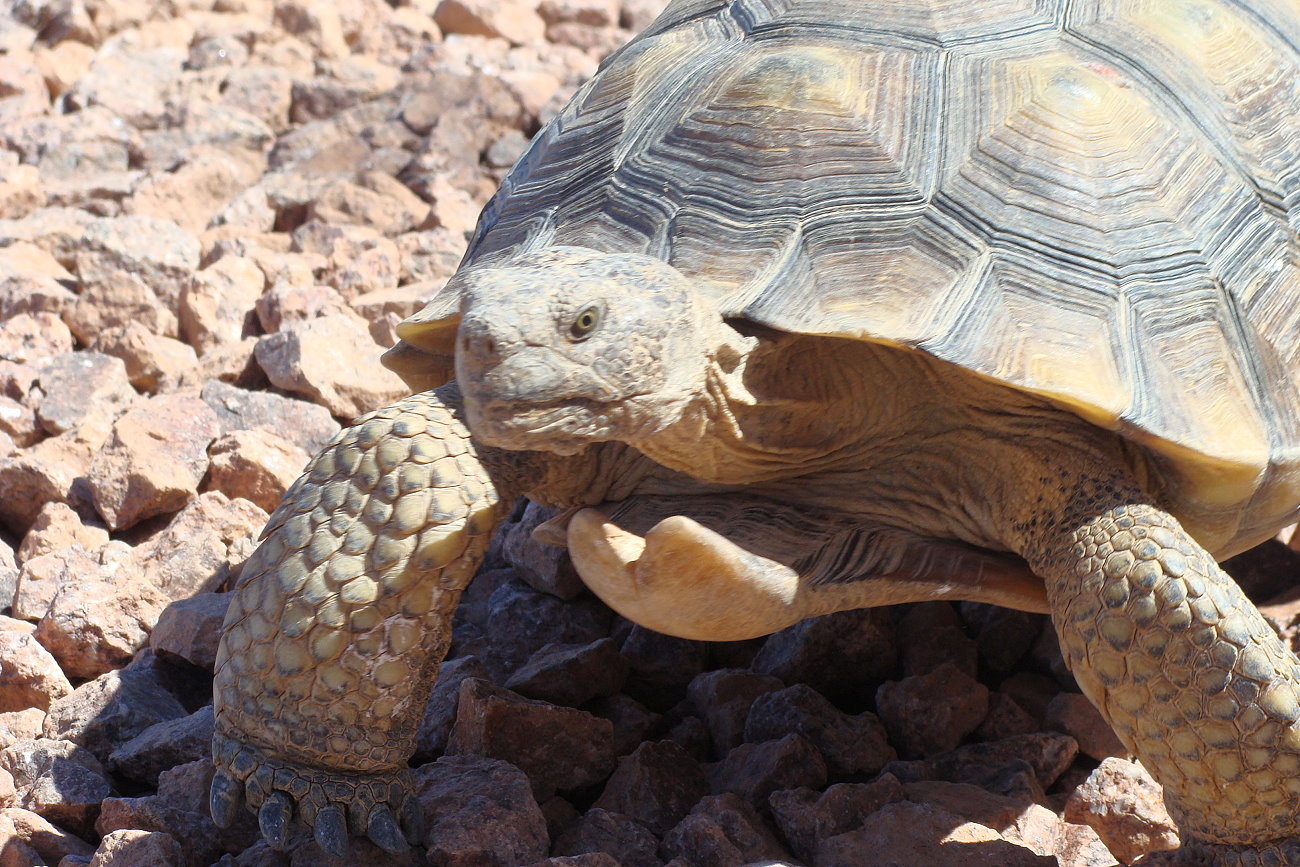ST. GEORGE — While wildfires within the Red Cliffs Desert Reserve are considered a major threat to the recovery of the threatened Mojave desert tortoise there, the reptile also has to deal with an increasing raven population that likes to snack on young tortoises.

During its Nov. 24 meeting, the Habitat Conservation Advisory Committee – the body that oversees the Habitat Conservation Plan, or HCP, that guides management of the reserve – was given a summary of attacks on tortoises and raven monitoring efforts over the last five years.
HCP staff started a raven monitoring program in 2015 and has seen a varied range of tortoise predation instances attributed to ravens each year since.
“We didn’t know a whole lot of what was going on before 2015,” Mike Schijf, a biologist for the HCP, told the committee as he presented the program summary.
Prior to the program’s inception, it was estimated that around 30 tortoise remains found since the 1990s were attributed to raven attacks. Since 2015, HCP staff have recorded the remains of 34 tortoises that had been eaten by ravens.
The ravens target tortoise hatchlings and juveniles because their shells have not hardened, making it easy for the birds to peck their way through and consume the tortoise’s innards.
Between 2015 and 2017, there were 17 recorded tortoise predations by ravens, with 2017 being the highest at the time with eight known instances. That number nearly doubled in 2019 when 14 tortoise carcasses left by ravens were found.

Areas within the reserve where the most tortoise remains have been left by ravens have since become primary monitoring zones for HCP staff. These areas include the Paradise Canyon area and the T-Bone Mesa, as well as the Red Mountain Wilderness Area near Snow Canyon State Park where 10 of the 14 tortoise remains recorded last year were found.
Paradise Canyon and the Red Mountain Wilderness Area are known nesting sites for the birds and account for 50% of all recorded tortoise predations in the last five years, Schijf said. While the T-Bone Mesa area is not a nesting site, utility lines that cross through there provide the ravens perches from where they can attack tortoises passing below.
While 2019 saw the highest reported amount of tortoise predations yet, that trend seemingly reversed in 2020, as only three tortoise carcasses attributed to ravens have been found thus far.
“This year we didn’t find a whole lot,” Schijf said. “We only found three total tortoise carcasses, and two of those were back in that Ivins (Snow Canyon) area and the other was Paradise Canyon.”

Ivins City Mayor Chris Hart, who has been vocal about what he saw as a lack of action against the ravens in a previous meeting, asked if the lower number of tortoise carcasses corresponded with area drop in the overall raven population in the area.
Staff have seen fewer nests in known nesting areas, Schijf said, yet added the ravens may have simply chosen to nest in a new location in the same general area that hasn’t been noticed yet. Some of the birds seem to “play musical chairs” with their chosen nesting locations each season, he said.
“It’s my guess that we’re really under-representing what’s really being predated,” Cameron Rognan, the HCP’s administrator, said. “Many of those tortoise remains disappear from the landscape in a hurry.”
As for the area’s raven population, it doesn’t appear to have shrunk any. In a June 2019 meeting of the HCP’s advisory committee, Rognan said the raven population across the Mojave Desert has increased 1,500-2,500% in recent years.
That growth has been spurred by the growth of the area’s human population, which tends to “subsidize” the birds by providing sources of food and water that were once unavailable. This includes areas like the local landfill that has seen a raven nesting site develop in the nearby desert reserve.
Overall, Schijf reported that there were a total of 53 known raven nests in the region, the majority of which were within the reserve. These nests are divided into 20 unique nesting territories. An estimated 140-180 ravens are believed to have fledged from these nests since 2015.

As for what HCP staff intend to do about the ravens moving forward, Schijf said they will continue to closely monitor priority areas where the majority of the predation has occurred. A recommendation about educating the public on how to not supply “subsidies” for the ravens was also made.
Other recommendations included more rigorous raven population monitoring that follow guidelines from the U.S. Fish and Wildlife Service, pursuing the use of lifelike “techno-tortoise” decoys that can be used to electronically study raven predation habits, monitoring juvenile tortoise detection rates, and pursue permitting for the use of egg oiling on raven nests.
The egg oiling involves putting vegetable oil on raven eggs, which in turn suffocates the embryo inside. The practice is considered a humane method of bird population control. Added benefits are limiting the number of new ravens that are being taught to prey on smaller tortoises, and possibly getting the ravens to think the area they’ve chosen to nest isn’t viable for egg-laying.
Using egg oiling as a method of raven population control in the Red Mountain Wilderness Area was mentioned in a previous HCP committee meeting. However, as the nesting area sits on federally-managed public lands, HCP staff needs to apply for permits from the proper agencies to get approval.
Schijf added that other lethal options for dealing with “offending” ravens should also be kept on the table if the need arises.
“I’m just glad we’re doing something,” Hart said at the conclusion of presentation.
Copyright St. George News, SaintGeorgeUtah.com LLC, 2020, all rights reserved.